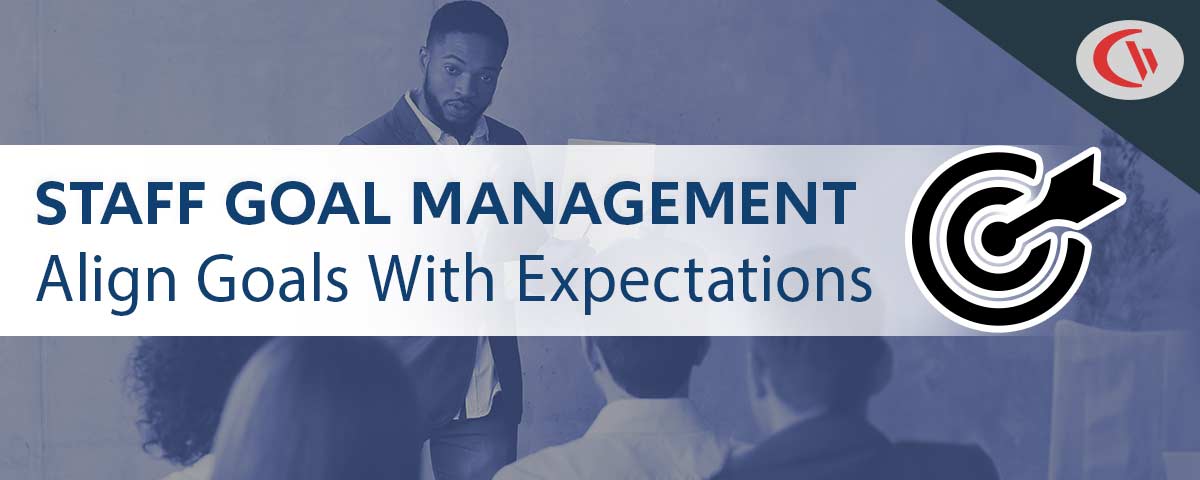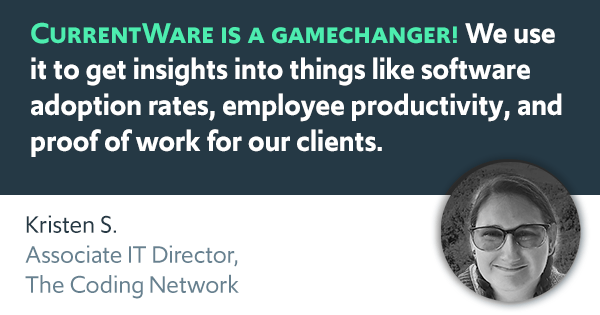How to Align Employee Expectations With Team Goals

Employee expectations are behavior, performance, and outcomes employers require from their workforce. They provide clarity and direction, ensuring the organization achieves shared business goals.
Without outlining (and monitoring) these expectations, employees won’t be clear on their roles or how they contribute to the bigger picture. They may become disengaged, lose productivity, or leave, which hurts any business.
Common Challenges in Aligning Goals and Expectations
Lack of employee involvement and commitment
Many team leaders make this common mistake: they tell employees what they expect from them without their input. When people are not involved in setting their own goals, they may feel less motivated and disconnected from the objectives.
Consider getting feedback from your team after relaying your demands. Let them share their thoughts and express their concerns. Plus, excluding employees from the expectation-setting process can result in goals that don’t match their skills – a recipe for poor performance.
If your team is largely digital, consider asking whether they prefer to work remotely or in the office. Both options have pros and cons regarding productivity and collaboration, so work with employees to discover which would benefit them. You may find that reaching out to align with them on this increases trust and, consequently, productivity!
Conflicting task priorities and team coordination
Conflicting task priorities and poor team coordination can significantly hinder the alignment of team goals with clear employee expectations. When team members are unsure of which tasks to prioritize or receive conflicting directives, productivity suffers, and stress levels rise.
This often leads to missed deadlines, duplicated efforts, or incomplete work. Effective alignment requires leaders to establish a clear hierarchy of priorities and foster open communication within the team.
By ensuring that every member understands not only their individual responsibilities but also how their work contributes to the organization’s broader goals, teams can collaborate more efficiently and avoid the confusion that comes from competing demands.
Confusion about changing priorities and employee focus
Economic downturns, market changes, or customer demands can force an organization to shift its priorities. Granted, business change is inevitable. The problem is that it can affect the entire company. Teams that were previously working towards a particular goal may have to readjust their efforts, such as how to calculate TAM (total addressable market) during major market changes.
But that’s easier said than done. Imagine asking the dev team to make a major architectural change to a system they’ve worked on for months. It can be demoralizing. Frequent changes in direction can erode employee confidence in leadership and broader company objectives.
It also impacts employee focus. With each shift in priorities, employees need to mentally readjust, learn new information, and may need to acquire new skills. All of this can be mentally tasking and result in a decrease in productivity.
Unfortunately, you can’t control the factors that influence priority changes. What you can do is communicate clearly why priorities are changing and how they align with the company goals. Creating a culture that values adaptability is another way around this problem.
Case Study
Shady Maple Takes Back Control
Over Employee Technology Use

Shady Maple found CurrentWare during a significant period of growth in their company. As their number of employees grew, Shady Maple knew that they needed an employee productivity solution that was scalable.
Their old ways of managing employee internet abuse—manually checking each employee’s computer individually and hoping that they didn’t clear out their web history—would no longer be sustainable.
Read our case study to learn how employee internet use monitoring and web filtering software transformed Shady Maple’s employee productivity management strategy.
How to Align Team Goals and Set Clear Employee Expectations
Aligning team goals with clear employee expectations requires a thoughtful approach. Set expectations too high, and you risk overwhelming and demotivating your team; set them too low, and you stifle their potential.
Here is how to set realistic yet challenging expectations for your employees.
Communicate clear objectives and milestones regularly
To successfully align team goals with employee expectations, you must reinforce those expectations frequently. This begins even before an employee starts working for the company. Be clear about the responsibilities, required skills, and expected outcomes in the job description.
Follow this up during the assessment and interview process. Let candidates know what the organization will require from them and get feedback. That way, candidates who can’t meet these expectations can opt out.
Also, emphasize these expectations during onboarding. Provide official internal documentation that outlines job duties, performance metrics, and company policies.
With knowledge of what is expected of them, employees are better equipped to work towards effective goals in their positions.
Involve employees in goal-setting processes
Don’t just set expectations – encourage feedback. When you cut employees out of the expectation-setting process, they feel it is imposed on them and may not do their best work.
Some of the best ways to get employee feedback are via town hall meetings, anonymous or pulse surveys, and 360-degree feedback. When employees know you value their opinions, it builds trust and a culture of inclusivity, as well as motivating them to hit those targets.
Ensure goals are specific, measurable, achievable, relevant, and time-bound (SMART)
Before setting employee expectations, ensure that they are SMART. According to the Corporate Financial Institute, SMART goals set you up for success by making goals specific, measurable, achievable, realistic, and timely. The SMART technique pushes you further, gives you a sense of direction, and helps you organize and reach your goals.
Let’s say you want the sales team to increase quarterly sales of a new software product. To ensure the goal checks the SMART boxes, make it:
- Specific – increase the licenses sold for our new project management software.
- Measurable – by selling 200 software licenses by the end of the quarter.
- Achievable – considering the current average of 150 licenses sold per quarter and with the recent marketing campaign boost, selling 200 licenses is challenging but feasible.
- Relevant – increasing software license sales aligns with the company’s strategic goal of growing our market share in the project management sector.
- Time-bound – achieve this goal by the end of Q3, specifically, September 30th.
Employees perform better and stay focused when given clear objectives.
Utilize digital tools to track progress and collaborate efficiently
Your tech stack will also impact the success of your goal alignment efforts. Setting expectations is one part of the job. You must also monitor employees to ensure they’re on track to achieve those goals.
Project management software like Trello, Asana, or Monday allows you to set and track individual and team goals. They also come with features like progress bars and Kanban boards that help you monitor progress. Many of these programs also have collaboration functions like chat, document sharing, and commenting, which promote real-time feedback.
Digital tools give everyone access to the same information, which creates transparency and accountability. Visualizing goals and progress can also boost morale.
If productivity is an ongoing concern, you can implement productivity tracking tools to see if poor work quality and missed targets are due to needing further support, or if it’s a result of blatant time theft.
Implement data-driven insights to optimize goal-setting
Don’t set expectations based on intuition or past experiences. Just because the sales team is usually assigned a 10% sales growth goal doesn’t mean it’s the right target for this year. A lot could have changed in the past 12 months, so you need to employ a data-driven approach.
Data provides insights about past performance, current market trends, and customer behavior. It eliminates guesswork and allows you to set realistic expectations.
When goals are demonstrably based on past data and employee capabilities, employees feel a sense of ownership over achieving them. Additionally, data helps identify where individual strengths can be harnessed to achieve team goals.
To implement a data-driven approach, start by identifying the data that is relevant to your goal. This could include past project durations, resource availability, or customer acquisition rates. Next, set SMART goals and monitor progress.
Remember to involve employees in the goal-setting process and when making data-driven adjustments. After all, they are the ones who carry out the tasks.
Provide regular feedback and performance reviews
If you set expectations for employees, you need a process for reviewing them and offering feedback. Otherwise, there is no point.
Now, most companies do this through annual performance reviews. While that works, a better approach is to conduct reviews on an ongoing basis.
Continuous feedback is essential for effective performance management. Timely feedback helps employees improve and tap into their strengths. Managers can then promptly address issues, leading to better performance and higher employee satisfaction.
How To Tell Employees They Are Not Meeting Expectations
Are you struggling to address poor performance with a direct report?
Even if you have a great team with highly skilled employees, as a manager you will eventually be forced to have difficult conversations with employees who are performing poorly.
The good news is that it’s possible to set performance expectations and address an employee’s behavior in a way that both you and the employee will benefit from.
Read these articles to learn more about addressing underperforming employees
- How To Tell An Employee They Need to Improve
- How to Motivate Underperforming Employees
- How To Measure Employee Productivity
Conclusion
It is important to set employee expectations. However, it is even more crucial to set clear, realistic goals that align with the organization’s objectives. That is how you can keep your workforce engaged, productive, and satisfied – ingredients for a successful business.
About the Author
This article was provided by DealFront, a go-to-market platform that gives sales and marketing teams data, applications, and insights to help them find leads and close deals. Learn about them and other options for the best sales automation software.
Improve Employee Productivity With
CurrentWare’s Remote Employee Monitoring Software
Ready to get advanced insights into how your employees spend their time? Reach out to the CurrentWare team for a demo of BrowseReporter, CurrentWare’s employee and computer monitoring software.
- Improve Productivity
Track unproductive web browsing and idle time to detect time-wasting - Save Time With Intuitive Reports
User-friendly reports make it easy to understand employee computer activity - Enhance Visibility
See how employees spend their time—even on Terminal Server and Remote Desktop Services!


